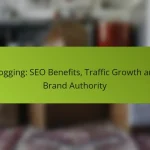Crafting effective e-commerce ad copy is essential for capturing the attention of potential customers and boosting conversions. By employing techniques such as emotional appeal, clear value propositions, and urgency, businesses can create compelling messages that resonate with their target audience. Avoiding common pitfalls like complex language and lack of mobile optimization is crucial for maximizing ad effectiveness.
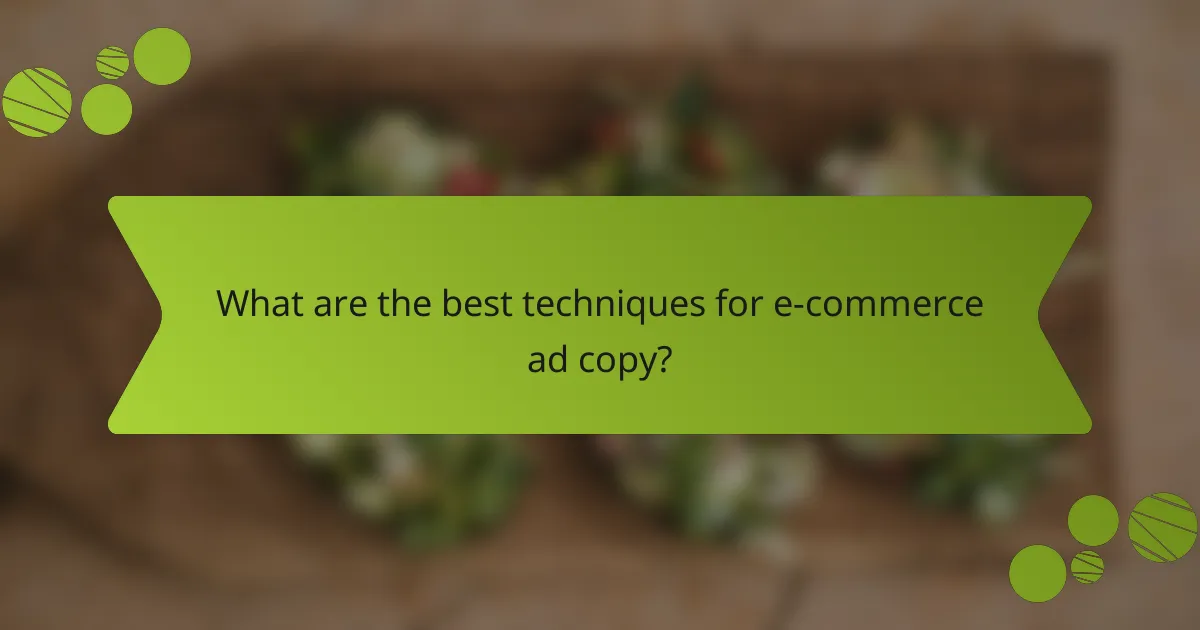
What are the best techniques for e-commerce ad copy?
Effective e-commerce ad copy combines various techniques to engage potential customers and drive conversions. Key strategies include leveraging emotional appeal, presenting a clear value proposition, creating urgency and scarcity, tailoring messages to specific audiences, and incorporating strong calls to action.
Emotional appeal
Emotional appeal connects with customers on a personal level, influencing their purchasing decisions. By tapping into feelings such as happiness, nostalgia, or fear of missing out, brands can create a compelling narrative that resonates with their audience.
For example, a clothing brand might showcase customers enjoying life in their apparel, evoking a sense of belonging and joy. This approach encourages potential buyers to envision themselves in similar situations, increasing the likelihood of a purchase.
Clear value proposition
A clear value proposition communicates the unique benefits of a product or service, helping customers understand why they should choose it over competitors. This statement should be concise and highlight key features that address customer needs.
For instance, a tech gadget might emphasize its superior battery life and user-friendly interface. By clearly stating these advantages, the ad copy can effectively capture attention and drive interest.
Urgency and scarcity
Creating a sense of urgency and scarcity can motivate customers to act quickly, reducing the likelihood of procrastination. Phrases like “limited time offer” or “only a few left in stock” can spur immediate action.
For example, an online retailer might promote a flash sale with a countdown timer, encouraging customers to make a purchase before time runs out. This tactic can significantly boost conversion rates during promotional campaigns.
Targeted messaging
Targeted messaging involves tailoring ad copy to specific segments of the audience based on demographics, interests, or behaviors. This personalization increases relevance and engagement, making customers feel understood and valued.
For instance, a skincare brand might create different ads for teenagers and older adults, focusing on acne solutions for the former and anti-aging products for the latter. This approach ensures that the messaging resonates with each group’s unique concerns.
Strong call to action
A strong call to action (CTA) directs customers on what to do next, making it clear how they can take advantage of the offer. Effective CTAs use action-oriented language and create a sense of urgency.
Examples of compelling CTAs include “Shop Now,” “Get Yours Today,” or “Join the Exclusive Club.” By using direct and persuasive language, businesses can guide customers toward completing their purchases.

How can I optimize ad copy for conversions?
To optimize ad copy for conversions, focus on clear messaging that resonates with your target audience. Use persuasive language, highlight benefits, and create a sense of urgency to encourage immediate action.
A/B testing strategies
A/B testing involves comparing two versions of ad copy to determine which performs better. Start by changing one element, such as the headline or call-to-action, and monitor the results over a set period.
Consider testing different formats, such as short versus long copy, or varying the emotional appeal. Aim for a sample size that provides statistically significant results, typically in the hundreds or thousands, depending on your traffic.
Analyzing customer feedback
Customer feedback is invaluable for refining ad copy. Collect insights through surveys, reviews, and social media comments to understand what resonates with your audience.
Look for common themes in feedback, such as preferred features or pain points. Use this information to adjust your messaging, ensuring it aligns with customer expectations and desires.
Utilizing analytics tools
Analytics tools help track the performance of your ad copy, providing data on click-through rates, conversion rates, and user engagement. Google Analytics and similar platforms can offer insights into which copy variations are most effective.
Set up goals and funnels to measure how well your ad copy drives conversions. Regularly review the data to identify trends and make informed adjustments to enhance performance over time.
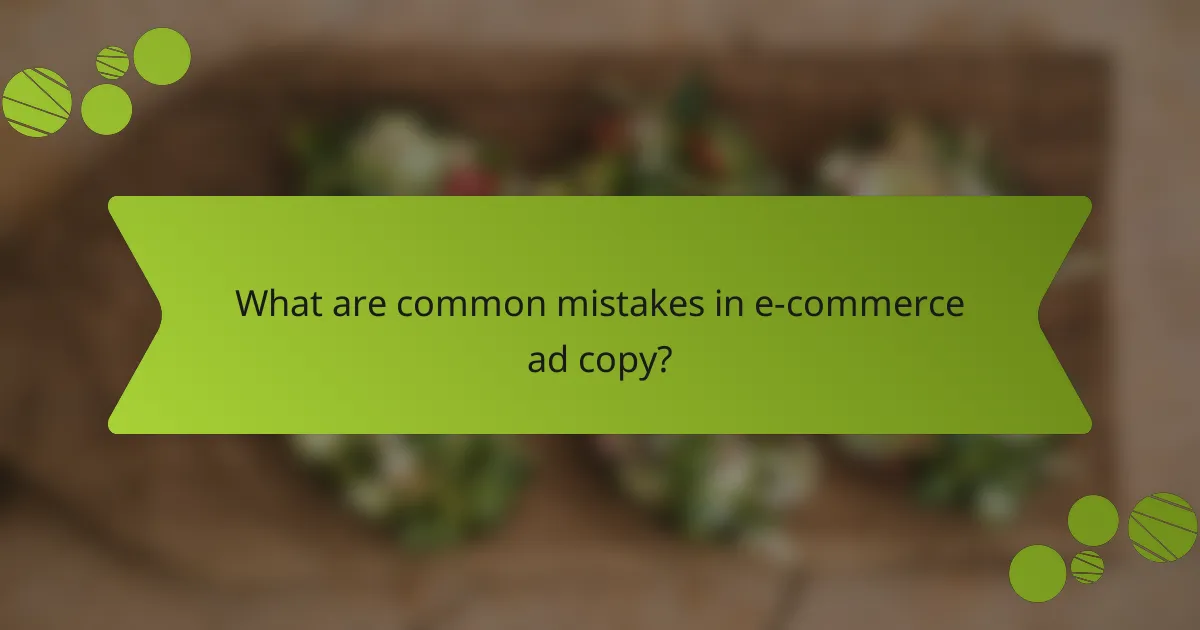
What are common mistakes in e-commerce ad copy?
Common mistakes in e-commerce ad copy include failing to understand the target audience, using overly complex language, and neglecting mobile optimization. These errors can significantly reduce the effectiveness of ads and hinder conversion rates.
Lack of audience understanding
Not knowing your audience can lead to irrelevant messaging that fails to resonate. It’s crucial to conduct thorough market research to identify demographics, preferences, and pain points of potential customers.
Utilize tools like surveys, social media insights, and analytics to gather data. Tailoring your ad copy to reflect the interests and needs of your audience can increase engagement and drive sales.
Overly complex language
Using complicated jargon or lengthy sentences can confuse potential customers and deter them from taking action. Clear and concise language is essential for effective communication in e-commerce ads.
Focus on simple, direct phrases that convey your message quickly. Aim for a reading level that matches your audience; for most consumers, this means using everyday language and avoiding technical terms unless absolutely necessary.
Ignoring mobile optimization
With a significant portion of online shopping occurring on mobile devices, neglecting mobile optimization can lead to lost sales. Ensure that your ad copy is easily readable on smaller screens and that call-to-action buttons are accessible.
Test your ads on various mobile devices to confirm that formatting, images, and text display correctly. Consider using shorter headlines and bullet points to make information digestible for mobile users.
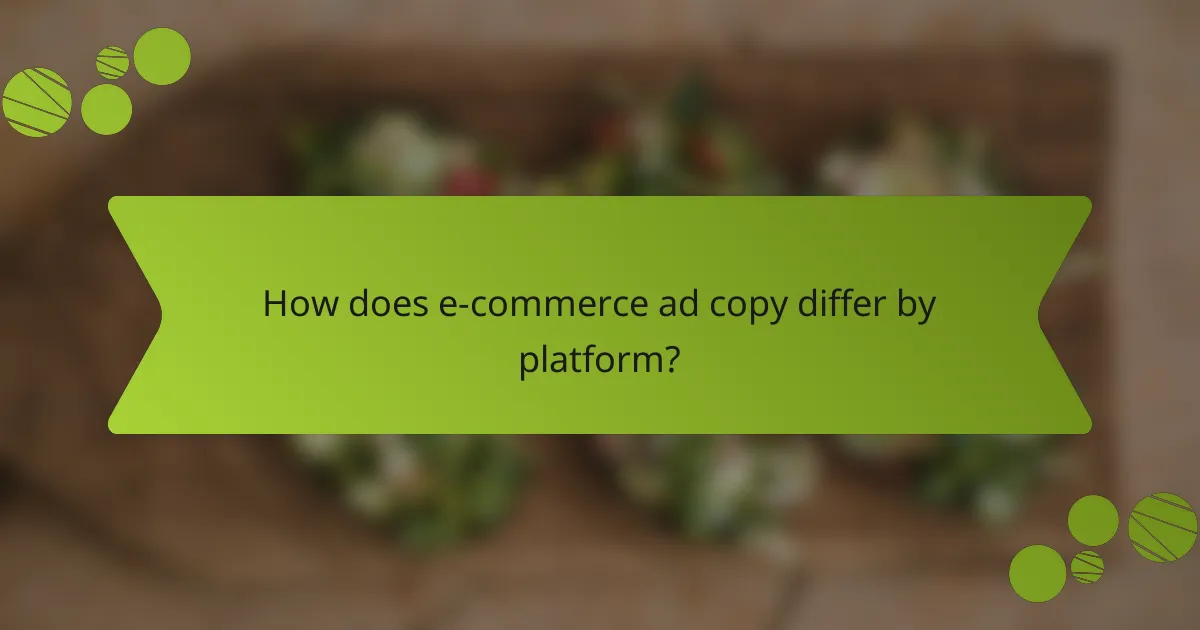
How does e-commerce ad copy differ by platform?
E-commerce ad copy varies significantly across platforms due to differing audience behaviors and content formats. Understanding these differences can enhance engagement and conversion rates by tailoring messages to fit each platform’s unique characteristics.
Facebook ad copy characteristics
Facebook ad copy should be concise and engaging, typically featuring a clear call-to-action. The platform’s audience appreciates relatable content, so using conversational language can help build connections.
Utilize eye-catching visuals alongside your text to capture attention quickly. Aim for a character count of around 125-150 characters for optimal visibility on mobile devices.
Google Ads copy essentials
Google Ads copy must be direct and keyword-focused, as it appears in search results. Highlighting unique selling propositions (USPs) within the first line is crucial for attracting clicks.
Ad headlines should be limited to 30 characters, while descriptions can extend to 90 characters. Incorporating relevant keywords can improve ad ranking and visibility, so research keywords that align with your target audience’s search intent.
Instagram visual storytelling
Instagram ad copy thrives on visual storytelling, where images or videos play a pivotal role. The copy should complement the visuals, often using brief, impactful phrases or questions to engage viewers.
Keep captions under 125 characters for better engagement, and consider using hashtags strategically to increase discoverability. Authenticity resonates well on this platform, so maintaining a consistent brand voice is essential.
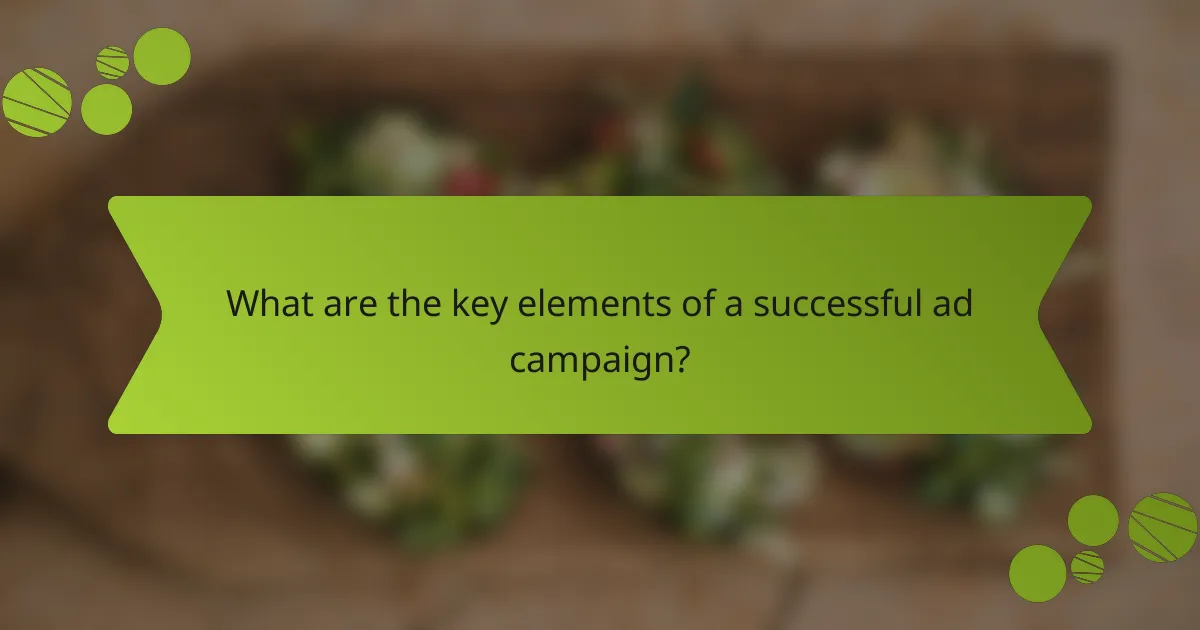
What are the key elements of a successful ad campaign?
A successful ad campaign hinges on clear objectives, understanding the target audience, and crafting compelling messages. These elements work together to drive engagement and conversions, ensuring that the campaign resonates with potential customers.
Target audience identification
Identifying the target audience is crucial for tailoring your ad campaign effectively. This involves researching demographics, interests, and behaviors to create a detailed profile of potential customers.
Consider using tools like surveys, social media analytics, and market research reports to gather insights. Aim to segment your audience into specific groups based on shared characteristics, which can enhance the relevance of your messaging.
For example, if you are selling eco-friendly products, your target audience might include environmentally conscious consumers aged 25-40. Focus your ads on platforms where this demographic is most active, such as Instagram or Pinterest.
